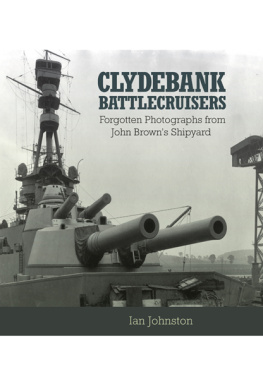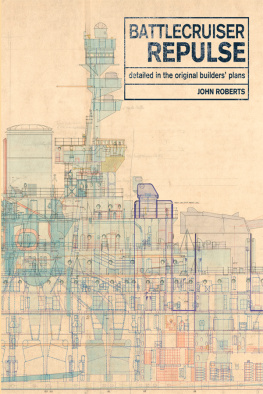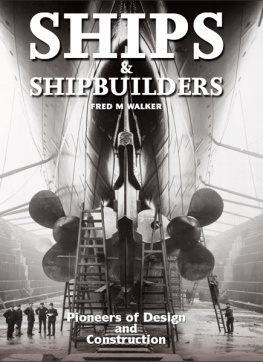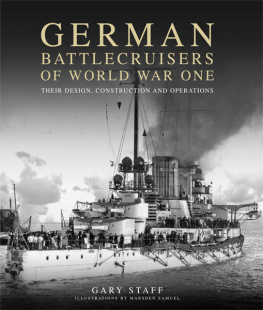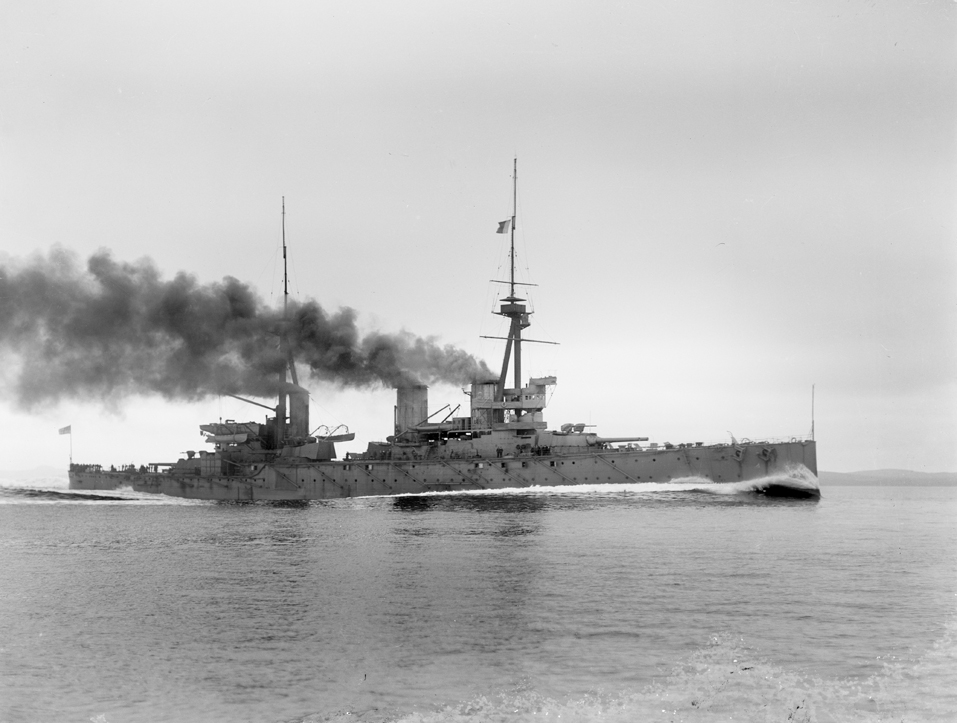
Inflexible at speed on her trial runs. (NRS UCS111837444)
Text Ian Johnston 2011
Photographs Crown Copyright 2011 by permission of National Records of Scotland
First published in Great Britain in 2011 by
Seaforth Publishing
An imprint of Pen & Sword Books Ltd
47 Church Street, Barnsley
SYorkshire S70 2AS
www.seaforthpublishing.com
Email
British Library Cataloguing in Publication Data
A CIP data record for this book is available from the British Library
ISBN 978 1 84832 113 7
EPUB ISBN: 978 1 78346 936 9
PRC ISBN: 978 1 78346 703 7
All rights reserved. No part of this publication may be reproduced or transmitted in any form or by any
means, electronic or mechanical, including photocopying, recording, or any information storage and
retrieval system, without prior permission in writing of both the copyright owner and the above publisher.
The right of Ian Johnston to be identified as the author of this work has been asserted in accordance with
the Copyright, Designs and Patents Act 1988
Typeset and designed by Stephen Dent
Printed in China through Printworks International Ltd
CONTENTS
INTRODUCTION
D uring the period 1906 to 1916, five main classes of battlecruisers were built for the Royal Navy, a total of thirteen ships. The orders for these vessels were distributed across the principal shipyards, Royal Dockyards and private yards responsible for all the capital ships built up to and including the First World War. For many of these yards, this meant an all but continuous supply of prestigious contracts, particularly so in the case of battlecruisers which were generally of a higher order value than their battleship equivalents and moreover, held in very high esteem by the Navy and public alike in the years up to 1914.
The very rapid development of the battlecruiser type during the ten-year period from 1906 to 1916 resulted in ships half as long again on twice the displacement, 20 per cent faster and with 50 per cent more offensive power. Naturally, the increase in size that inevitably accompanied successive classes of capital ship had an impact on the yards that produced them to the extent that, by 1916, only a handful of the yards that started building the early dreadnoughts were capable of building ships the size of Repulse and Hood.
The John Brown shipyard and marine engineering works on the River Clyde is significant in the construction of battlecruisers for two reasons. The first is that the records of this company have survived the collapse of the British shipbuilding industry substantially intact although with some important areas missing. In this, John Browns is probably better served historically than any of the other big British yards operating at that time. These records provide access to information about the construction of the ships they built in the form of a detailed breakdown of costs and the labour devoted to each contract. The latter, expressed in weekly levels, gives an indication of effort over the entire building period. However, the skills and techniques employed at Clydebank were much the same as those in any of the big British yards and to that extent, the experience of Clydebank can be seen as typical of the rest of the industry as a whole. Secondly, John Browns is noteworthy in having built one battlecruiser from each of the five main classes beginning with Inflexible followed by Australia, Tiger, Repulse and Hood. Had the construction of the G3 battlecruiser design of 1921 gone ahead, Browns would also have contributed one of those.
While there are many expert books on the design history and operational careers of battlecruisers, the purpose of this book is to look exclusively at the construction of the five that were laid down over a ten-year period at Clydebank. The working practices, machines and tools used there were typical of those used throughout the shipbuilding industry and to that extent, the events described here could as easily have taken place at any of the other large British yards. While the shipyard was the point of assembly, the ramifications of building such large and complex vessels ran through much of British industry, with companies located throughout the UK making contributions to the ship as disparate as barbette armour and the ships bell.

The river frontage of John Browns Clydebank shipyard in 1907. The Cunard liner Lusitania is in the fitting-out basin which separates the works into West and East Yards. While there are no vessels under construction in the West Yard, the East Yard is well occupied. The shipbuilding berths are served by light pole derricks capable of lifting three tons. The stern of Inflexible can be seen to right of shot. See yard plan overleaf. (Authors collection)
The sequence of events from conception of the design of a warship, through the tendering process to the construction, completion and trials is largely the same for all the vessels described here. The information used to describe this process is based on two sources: the Ships Covers held at the National Maritime Museum in Greenwich and the archives of John Brown & Co Ltd, Clydebank, held at Glasgow University Archives. The Ships Covers were used to retain documents relevant to individual ships from the conceptual phase through construction and subsequent service careers. They reflect Admiralty thinking through internal memos, letters, reports and other material across a range of subjects pertinent to a particular ship or class of ships. The shipbuilders records are concerned exclusively with the tendering and construction phases of the ship. Together, both sources throw some light on the relationship between the Admiralty and the shipbuilding firms in what has generally been a neglected area of study. The Covers are, however, somewhat haphazard in their organisation with some documents out of chronological order and others undated. Where the Cover for one ship might give a full report on steam trials, for example, this might be missing entirely in another. The John Brown archive, although voluminous, is also incomplete and inconsistent in part. For those reasons, an even treatment of the five ships that concern this book is not possible. However, a particular strength of the John Brown Archive is the large number of glass plate negatives which record the building process from keel laying to trials. These excellent images provide the pictorial basis for this book.
John Brown & Co Ltd
By the time Inflexible was laid down at their Clydebank shipyard in 1906, the yard had been in existence since 1871. Many prestigious liners had been constructed over the years and a lasting relationship had been formed with Cunard, the most recent example of which was the order for Lusitania. However, the Clydebank works did not assume the title John Brown & Co Ltd until 1899 when the Sheffield company of that name purchased the yard for a little under 1 million. The Sheffield company wanted a secure outlet for their steel forge and armour products and correctly foresaw a great opportunity in warship construction not simply because of the Royal Navys pre-eminent position in the fleets of the world but also in the emerging naval race between Britain and Germany. During the 1890s a number of well-known British companies with armour and armament manufacturing capacities had also ventured into shipbuilding, such as Vickers at Barrow and Cammell at Birkenhead, as a means of extending and consolidating output. In all probability, the reality of this contest as measured by the volume of warship orders that ensued exceeded their wildest dreams.
Next page
